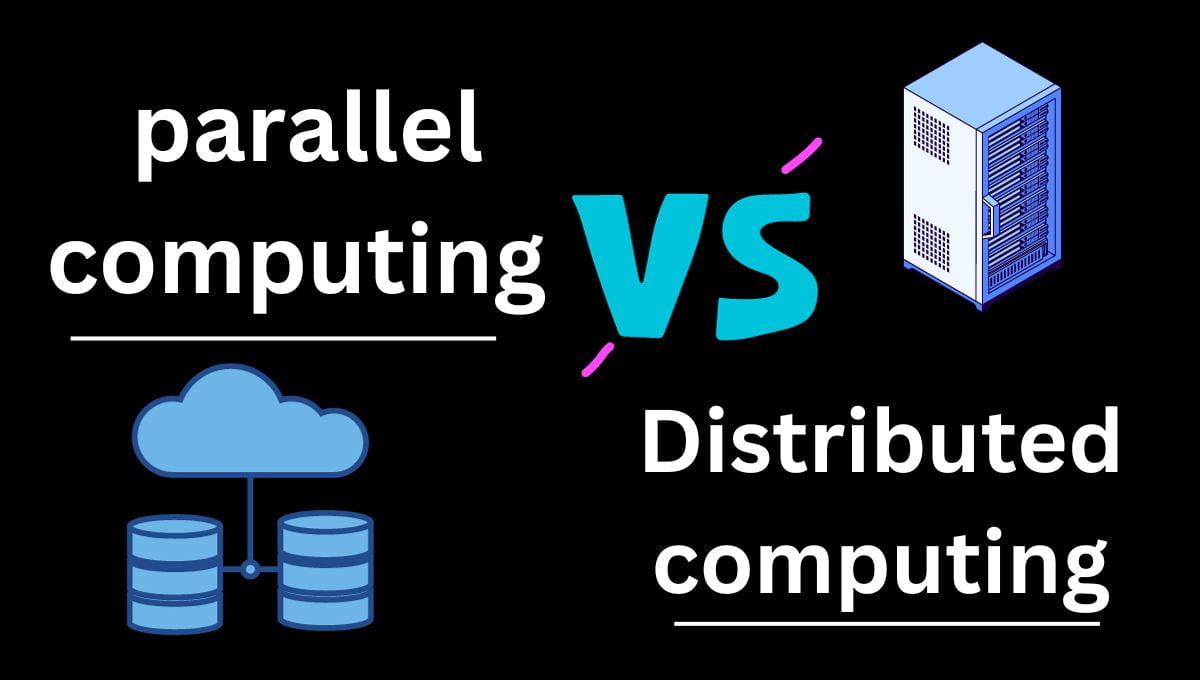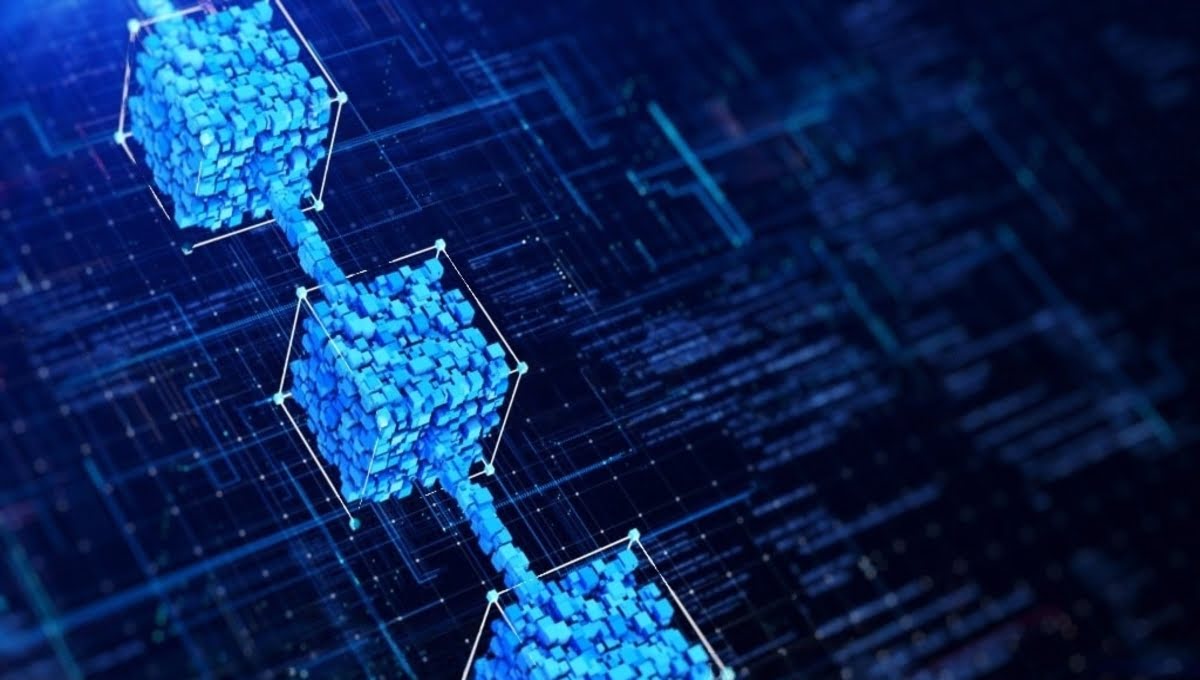CLOUD COMPUTING
parallel computing vs distributed computing

Two words that frequently appear in the fast-evolving realm of computing are “parallel computing” and “distributed computing.” These ideas are critical for increasing the performance and efficiency of many computer activities. In this article, we’ll delve into the intricacies of parallel computing and distributed computing, highlighting their differences, use cases, and advantages.
Introduction of parallel computing vs distributed computing
The phrases “parallel” and “distributed” computing are frequently used in discussions about performance optimization and handling large-scale data processing. These two techniques have distinct characteristics and uses, and recognizing the differences between them is critical for efficiently utilizing their potential.
What is parallel computing?
Parallel computing is a sort of computation in which numerous calculations or processes are run at the same time. The goal of parallel computing is to do numerous tasks at the same time, distributing the work among multiple processors to achieve a speedier answer.
Due to the increasing complexity of scientific and engineering problems, as well as the growing demand for real-time data processing in many applications such as weather forecasting, financial simulations, scientific research, and video and image processing, parallel computing has become increasingly important in recent years.
What is distributed computing?
Distributed computing is a branch of computer science that investigates the distribution of computational activities over several interconnected computers in a network with the objective of improving performance and scalability. Each computer in a distributed computing system works on a segment of the issue, and the findings from each machine are pooled to create the final solution.
Here are some examples of distributed computing systems:
Grid computing is a sort of distributed computing in which many computers are linked together via a network to tackle a common problem.
Cluster computing is a sort of distributed computing in which several computers are linked together to produce a single high-performance system.
Cloud computing is a type of distributed computing in which computing resources are delivered as a service through the internet.
Parallel Computing vs. Distributed Computing: Key Differences
Differences between Parallel Computing and Distributed Computing:
| S.NO | Parallel Computing | Distributed Computing |
|---|---|---|
| 1. | Many operations are performed simultaneously | System components are located at different locations |
| 2. | A single computer is required | Uses multiple computers |
| 3. | Multiple processors perform multiple operations | Multiple computers perform multiple operations |
| 4. | It may have shared or distributed memory | It have only distributed memory |
| 5. | Processors communicate with each other through bus | Computers communicate with each other through message passing. |
| 6. | Improves the system’s performance | Improves system scalability, fault tolerance and resource sharing capabilities |
Use Cases for Parallel Computing
Parallel computing is well-suited for tasks like scientific simulations, 3D rendering, and cryptographic operations. Its ability to harness the full power of a single machine makes it ideal for tasks that require intensive processing.
Here are some common use cases for parallel computing:
- Scientific research: Many scientific domains, including physics, chemistry, biology, and engineering, use parallel computing. Parallel computers, for example, are used to model complicated physical systems such as the climate or the human brain.
- Data science: large datasets are processed and analyzed using parallel computing. Parallel computers are used, for example, to mine social media data for insights or to analyze financial data for fraud detection.
- Machine learning: Machine learning models are trained and deployed using parallel computing. Parallel computers, for example, are used to train massive language models like mine as well as image recognition models for self-driving cars.
- Video games: Parallel computing is utilized in video games to produce complex images. Parallel graphics processing units (GPUs), for example, are utilized to produce realistic 3D scenes and lighting effects.
- Financial modeling: Parallel computing is used to model and quantify risk in complicated financial systems. Parallel computers, for example, are used to mimic the stock market or to analyze the risk of a loan portfolio.
Use Cases for Distributed Computing
When data is scattered across multiple sites or when redundancy and fault tolerance are crucial, distributed computing shines. Web servers, content delivery networks, and large-scale data processing systems are examples of applications.
Here are some common use cases for distributed computing:
- Scientific research: Many scientific domains, including physics, chemistry, biology, and engineering, use distributed computing. Distributed computing, for example, is used to simulate the climate, examine the human genome, and design novel medications.
- Data science: Distributed computing is used in data science to handle and evaluate big datasets. Distributed computing, for example, is used to mine social media data for insights or to analyze financial data for fraud detection.
- Machine learning: Machine learning models are trained and deployed using distributed computing. Distributed computing, for example, is used to train big language models like mine as well as image recognition models for self-driving cars.
- Content delivery: Distributed computing is used to deliver content to users in a timely and dependable manner. Content delivery networks (CDNs), for example, use distributed computing to send videos, photos, and other web content to users all over the world.
- Cloud computing: Cloud computing platforms such as Amazon Web Services (AWS), Microsoft Azure, and Google Cloud Platform (GCP) rely on distributed computing. These platforms provide a wide range of services driven by distributed computing, such as compute, storage, and networking.
Advantages and Disadvantages of Parallel Computing
Advantages of parallel computing:
- Speed: Parallel computing can significantly speed up the execution of applications by dividing the workload among multiple processors.
- Scalability: Parallel computing systems can be scaled up to handle larger workloads by adding more processors.
- Efficiency: Parallel computing can improve the efficiency of applications by utilizing the processing power of multiple processors simultaneously.
- Reliability: Parallel computing systems can be more reliable than sequential systems because they can continue to operate even if one or more processors fail.
Disadvantages of distributed computing:
- Complexity: Parallel computing systems can be more complex to design and implement than sequential systems.
- Cost: Parallel computing systems can be more expensive than sequential systems due to the cost of additional hardware and software.
- Overhead: Parallel computing systems can have some overhead associated with communication and synchronization between processors.
- Not all problems are parallelizable. Not all problems can be parallelized, meaning that they cannot be divided into smaller tasks that can be executed simultaneously.
Advantages and Disadvantages of Distributed Computing
Advantages of parallel computing:
- Scalability: Distributed computing systems can be scaled up or down to meet changing demands by adding or removing nodes.
- Reliability: Distributed computing systems are more reliable than centralized systems because they are not reliant on a single point of failure. Because they do not rely on a single point of failure, distributed computing systems are more reliable than centralized ones. If one node fails, the remaining nodes can continue to function.
- Performance: Distributed computing systems can often achieve better performance than centralized systems by dividing the workload among multiple nodes.
- Cost-effectiveness: Distributed computing systems can be more cost-effective than centralized systems because they can utilize cheaper, commodity hardware.
Disadvantages of distributed computing:
- Complexity: Distributed computing systems can be more complex to design and implement than centralized systems.
- Security: Distributed computing systems can be more vulnerable to security attacks than centralized systems because they have a larger attack surface.
- Coordination overhead: Distributed computing systems can have some overhead associated with communication and coordination between nodes.
- Not all problems are distributed. Not all problems can be distributed, meaning that they cannot be divided into smaller tasks that can be executed on different nodes.
Challenges in Parallel Computing
- Limited Scalability: It’s challenging to scale beyond the capabilities of a single machine.
- Synchronization: Ensuring that parallel processes don’t interfere with each other can be complex.
- Hardware Dependency: Performance depends on the machine’s hardware.
Challenges in Distributed Computing
- Network Latency: Communication across nodes may introduce delays.
- Complexity: Building and managing distributed systems can be intricate.
- Data Consistency: Maintaining data consistency across nodes can be a challenge.
Combining Parallel and Distributed Computing
In some cases, a hybrid approach that combines both parallel and distributed computing can yield optimal results. This approach leverages the strengths of each method to tackle complex problems effectively.
Real-World Applications
Scientific Research
Scientists use parallel and distributed computing for complex simulations, such as weather forecasting, molecular modeling, and nuclear physics research.
Big Data Analytics
Distributed computing plays a pivotal role in processing vast datasets for insights and trends, making it essential for industries like finance, e-commerce, and healthcare.
The Future of Parallel and Distributed Computing
As technology continues to advance, both parallel and distributed computing will play crucial roles in addressing the increasing demands for processing power and data handling. Researchers and engineers are continually exploring innovative ways to optimize these approaches.
Conclusion
In the realm of computing, parallel computing and distributed computing are two powerful methodologies, each with its own set of advantages and challenges. The choice between them depends on the specific requirements of a task, with some applications benefiting from a combination of both. As technology evolves, these two paradigms will continue to shape the landscape of computing, driving innovation and efficiency.
FAQs of parallel computing vs distributed computing
Can a task be both parallel and distributed?
(A) Yes, some tasks can benefit from both parallel and distributed computing. This hybrid approach can provide the best of both worlds in terms of speed and fault tolerance.
Which is better for handling large datasets: parallel or distributed computing?
(A) Distributed computing is typically better suited for handling large datasets, especially when the data is spread across different locations or requires redundancy.
Is it possible to use parallel computing on a network of machines?
(A) Yes, parallel computing can be used on a network of machines, but it primarily focuses on utilizing the resources of a single machine efficiently.
What are some examples of hybrid, parallel, and distributed computing applications?
(A) Yes, parallel computing can be used on a network of machines, but it primarily focuses on utilizing the resources of a single machine efficiently.
What are some examples of hybrid, parallel, and distributed computing applications?
(A) One example is in data analytics, where parallel processing is used within each node of a distributed system to analyze data chunks in parallel.
How can I get started with parallel and distributed computing?
(A) To get started, you can explore programming languages and libraries like MPI (Message Passing Interface) for parallel computing and technologies like Apache Hadoop for distributed computing.

 FUNDAMENTAL1 year ago
FUNDAMENTAL1 year agoHow Cloud Computing Improving Customer Service Processes

 FUNDAMENTAL4 months ago
FUNDAMENTAL4 months agoWhat is cloud computing? A Comprehensive Guide

 CLOUD COMPUTING3 weeks ago
CLOUD COMPUTING3 weeks agoWhat Is Vlan and VSAN In Cloud Computing?

 FUNDAMENTAL2 weeks ago
FUNDAMENTAL2 weeks agoHow can Cloud Technology Help Small Businesses ?

 FUNDAMENTAL4 months ago
FUNDAMENTAL4 months agoEvolution of Cloud Computing : A Well-Explained

 CLOUD COMPUTING3 weeks ago
CLOUD COMPUTING3 weeks agocloud bursting in cloud computing

 FUNDAMENTAL3 weeks ago
FUNDAMENTAL3 weeks agoIaaS PaaS and SaaS in cloud computing

 CLOUD COMPUTING3 weeks ago
CLOUD COMPUTING3 weeks agoDistributed computing in cloud computing?
















